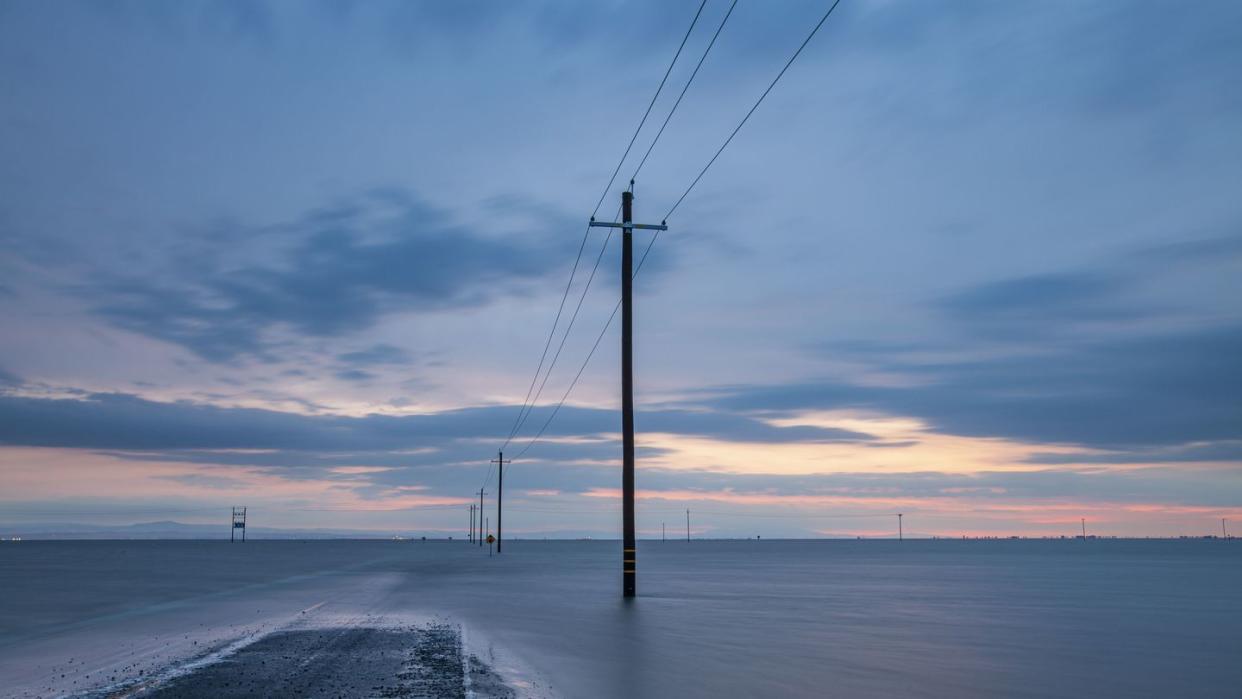A ‘Ghost Lake’ in California Has Disappeared for the Fifth Time Since 1890

Considered the largest body of freshwater west of the Mississippi River in the early 1800s, Tulare Lake disappeared after it was drained to irrigate farmland.
The lake has reappeared multiple times over the last century-plus, earning it the “ghost lake” moniker.
Tulare Lake filled once again in 2023, but has since disappeared.
Don’t call the 2023 resurgence of Lake Tulare a flood event. That lake has a history that long predates modern Californian farming—even if current water and farming practices have turned it into a “ghost lake.”
As ghosts tend to do, this one has disappeared once again.
Tulare Lake in the San Joaquin Valley, known as Pa’ashi by the indigenous Tachi Yokut tribe, was considered the largest body of freshwater west of the Mississippi River in the early 1800s. That all changed when land privatization helped drain the lake to make way for farming. The lake has tried to reemerge multiple times since, giving it the nickname of a “ghost lake.” Its latest attempt came in the spring of 2023, when rainstorms coupled with the runoff from the Sierras helped fill the lake.
Some called it flooding, but others say it was simply a lake returning.
“Most of the news coverage about this time talked about it as catastrophic flooding,” Vivian Underhill, a former researcher fellow at Northeastern University, said in a statement to the school’s news division. “And I don’t want to disregard the personal and property losses that people experienced, but what was not talked about so much is that it wasn’t only an experience of loss, it was also an experience of resurgence.”
That resurgence is lost again, and Tulare Lake has dissipated once more. “There’s no lake anymore,” Doug Verboon, Kings County Supervisor and farmer, told the San Francisco Chronicle. “There’s some wet ground but nothing major.”
What 2023 showed scientists is that Tulare Lake isn’t going to remain a historical asterisk. The lake has staying power, as much as modern-day farming and water usage allows. “This landscape has always been one of lakes and wetlands,” Underhill said, “and our current irrigated agriculture is just a century-long blip in this larger geologic history.”
NASA explains that the San Joaquin Valley sits like a bowl at the base of the southern Sierra. Near the middle of that bowl is what was once the largest freshwater lake west of the Mississippi. The Sarah Mooney Museum said that the lake could grow over 690 square miles in wet years—at times stretching as much as 100 miles long and 30 miles wide.
When the lake was in full force, a steamship could carry supplies from the Bakersfield area up to Fresno and then to San Francisco, covering 300 miles on waterways. Those “ancestral lakes” connecting bodies of water are just that: ancestral. Fresno was even once a lakeside town.
Subsequent damming and diverting of rivers for agriculture and other uses allowed the lakebed to be turned into farms. The museum states that the last discharge from the lake into the San Joaquin River was in 1878, which we can mark as the final turning point in the lake’s demise.
The first time the lake fully disappeared was 1890. “Now the valley is crisscrossed by hundreds of irrigation canals,” Underhill said, “all of which were originally built to take that lake water and put it onto irrigated fields.”
The lake returned four times between 1890 and 2023. It happened twice in the 1930s, once in the 1960s, and once in 1983. The spring 2023 storms helped speed the filling of the lake along, and got an additional assist from the meltwater flowing from the unusually large snowpack on the southern Sierra. The return of the lake—even for a brief time—invited back wetland birds, including burrowing owls. “Something that continues to amaze me,” Underhill said, “[the birds] know how to find the lake again. It’s like they’re always looking for it.”
The 2023 event gave the Tulare Lake staying power, and many thought would last well into 2024. But, sadly, it didn’t. Now looking for Tulare Lake is like searching for a ghost.
You Might Also Like
